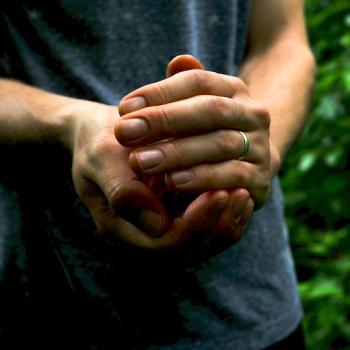
When her 10-year-old daughter left for school on a spring morning, Ashley Wright had no idea that only hours later she would receive a call from school officials that her baby girl, RaNiya, was being airlifted to a hospital.
Almost no parent expects this kind of call. Two days later, RaNiya had succumbed to injuries from a fight with another child who had allegedly bullied her.
Wright shared on social media, “As of 9:39 my baby girl has gain(ed) her wings.”
Now that RaNiya has gained her wings, her mother wants answers. The community wants answers.
I am certain they do not stand alone.
Between 1 in 4 and 1 in 3 U.S. students say they have been bullied at school.
Approximately 70% percent of young people and school staff have witnessed bullying in their schools.
Recent heartbreaking stories about children committing suicides indicate a trend of bullying as the precipitating event.
For example, 9-year-old McKenzie Adams of Alabama committed suicide after repeated bullyings.
Nine-year-old Madison Whittsett committed suicide after a change in medicine and school bullying.
Twelve-year-old Stormiyah Denson-Jackson died of suicide. Her mother recounts that her daughter’s attempts to reach out to staff about a lot of kids bullying her were in vain.
Childhood is not this mythical realm of total innocence that we, the adults, project upon youth.
How innocent is bullying, after all?
Most adult bullies did not suddenly become a bully in mid-life.
They were well practiced for years.
With this said, children are capable and able to understand more than adults, particularly in the U.S., tend to believe. They have been generating ways to stop bullying.
Ten-year-old Aiden Vasquez was hospitalized after being beaten by a school bully. He had refused to fight back because it was not the “Jedi Way.”
Also, 6-year-old Cavanaugh Bell convinced Gaithersburg, MD. Law makers to make February 21st ” Anti-Bullying Awareness Day.”
Everyone plays a role in constructing a world without bullying and without precious lives like RaNiya Wright being lost in the process.
Research shows that when bystanders intervene, bullying ceases within 10 seconds 57% of the time.
Articles and resources abound about “bully-proofing” children. Commonly, these methods support what to do when the child is a victim of bullying.
The consequences-the effects of bullying- are real.
According to Katie Hurley, LCSW, author of No More Mean Girls and The Happy Kid Handbook, along with decreased academic performance, short term effects on the bullied victim can include the following:
- Social isolation
- Feelings of shame
- Sleep disturbance
- Changes in eating habits
- Low self-esteem
- School avoidance
- Symptoms of anxiety
- Bedwetting
- Higher risk of illness
- Psychosomatic symptoms (stomachaches, headaches, muscle aches, other physical complaints with no known medical cause)
- Symptoms of depression
Furthermore, researchers in Finland found bullying during childhood can have long-range consequences:
…about 20 percent of those who were bullies as children had a mental health problem that needed medical treatment as a teen or young adult, and 23 percent of the kids who were victims of frequent bullying had sought help for a psychiatric problem before age 30.
The group that fared the worst in terms of adult mental health were the 8-year-olds who were frequently bullies and were also bullied themselves. About 31 percent of these children had psychiatric problems that required treatment, and these kids also had the highest rates of depression, anxiety disorders, schizophrenia and substance abuse of all four groups analyzed in the study.
Childhood is not a time of innocence.
While adults like to act as if these are idiosyncratic occurrences, our sanitized mythical world of innocence ignores the daily realities of children’s fight for survival in what can be Lord of the Flies conditions among their peers.
Indeed, the early stages of development and few acquired social experiences due to age have been misconstrued as innocence, so adults can comfortably avoid seeing children for who they are.
They are human.
They are not innocent.
They are not born and shaped in iniquity.
They are younger and human.
They think and act in ways that are human.
However, we authoritatively paint broad strokes about the canvas of the inner lives of children prior to finishing our one-dimensional renderings.
We want neat and tidy-color within the lines explanations.
In a world of impressionist and abstract, we paint by the numbers.
We, the adults, want everything to make perfect sense.
Diverse humans living out childhood or any stage of life do not make complete sense.
This reality requires a pause to sit with the tension of a challenged worldview.
Because then we can have the courage to actually remove the veil of our need to be comfortable, in order to truly see the dire need of young people all around us.

Update: Access to (Link opens in new window) Audio Version of This Post
Accessibility to Race and Grace content has been on my mind. Thank you to a Race + Grace reader for contacting me about this issue, too. I believe it was Divine timing.
Currently, I am exploring tools to use to help make Race and Grace more accessible through audio content. In the meantime, I have voice recorded this post.
Please feel free to contact me with ideas and resources to support inclusion in tech content. Thanks in advance for your patience.
-Dr. Sam
















